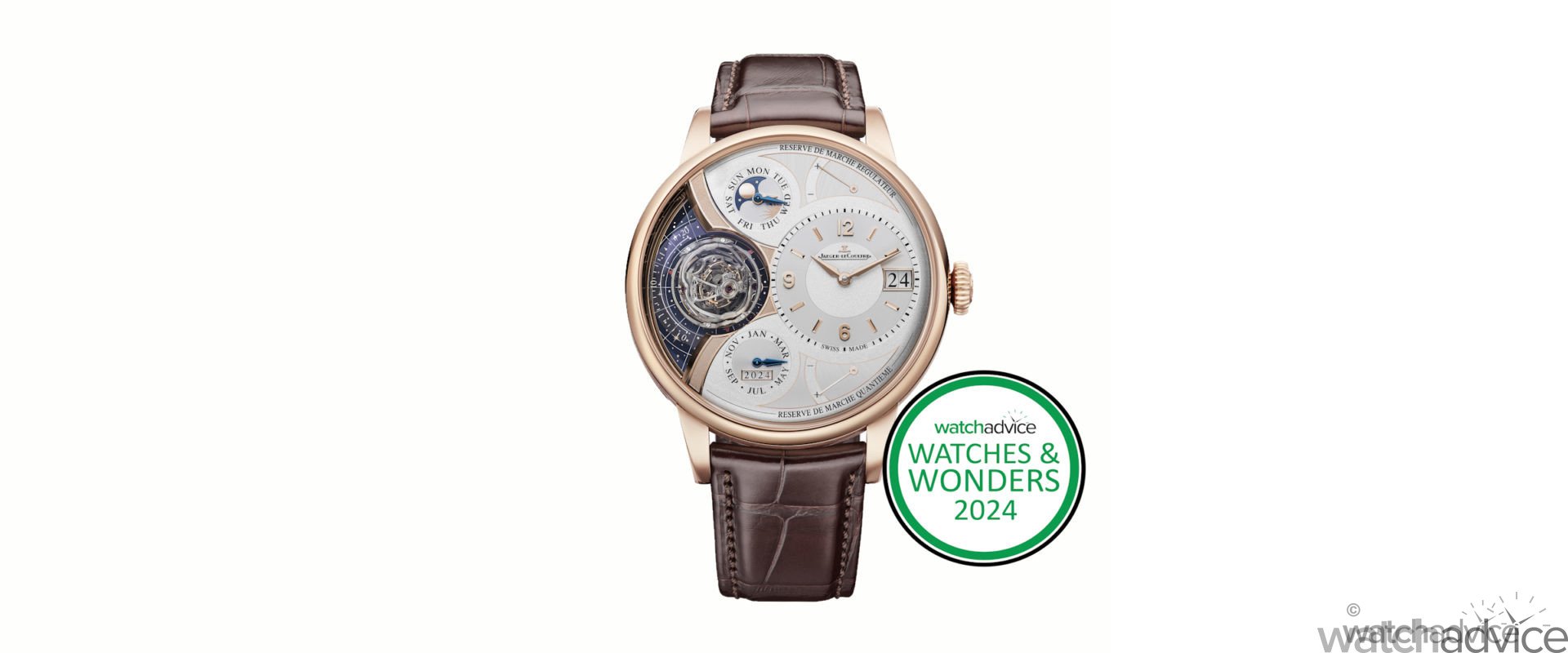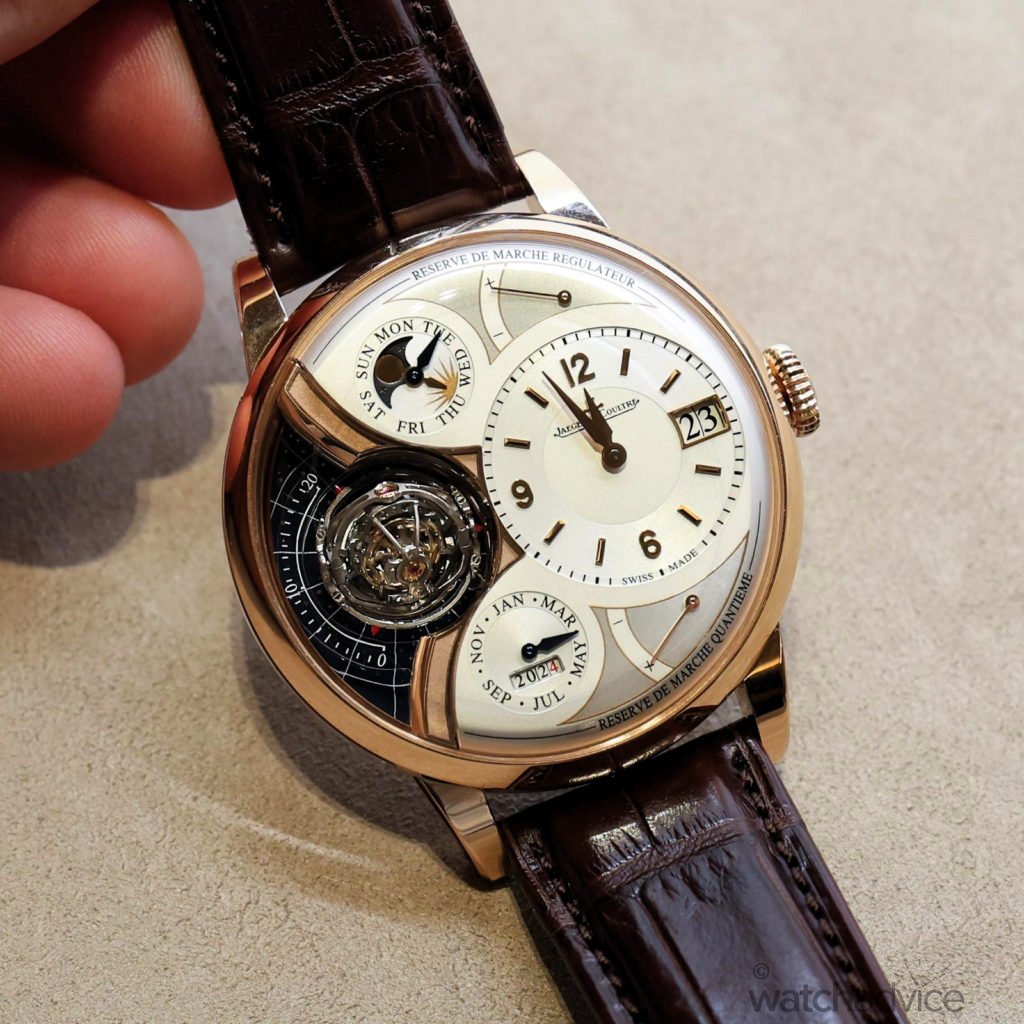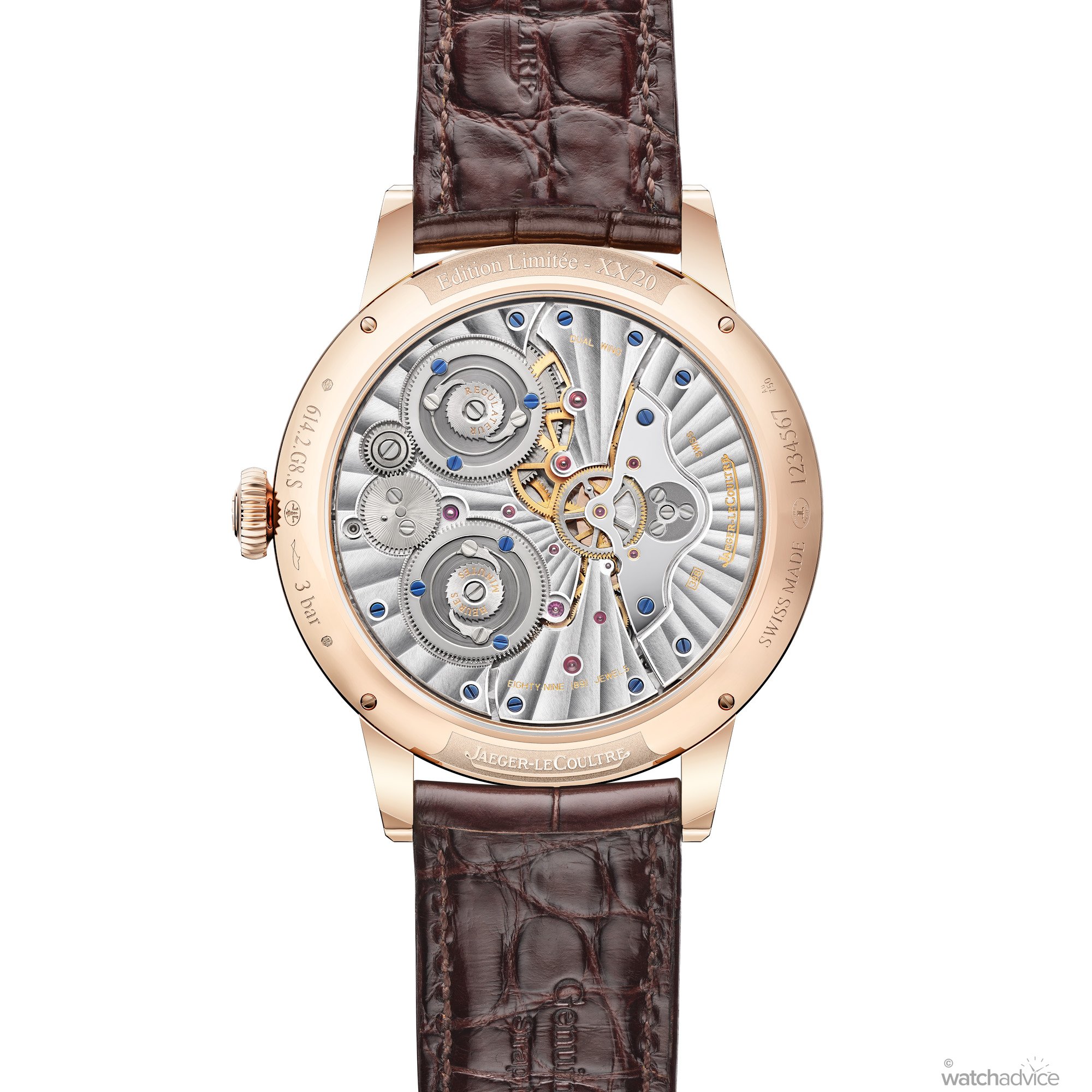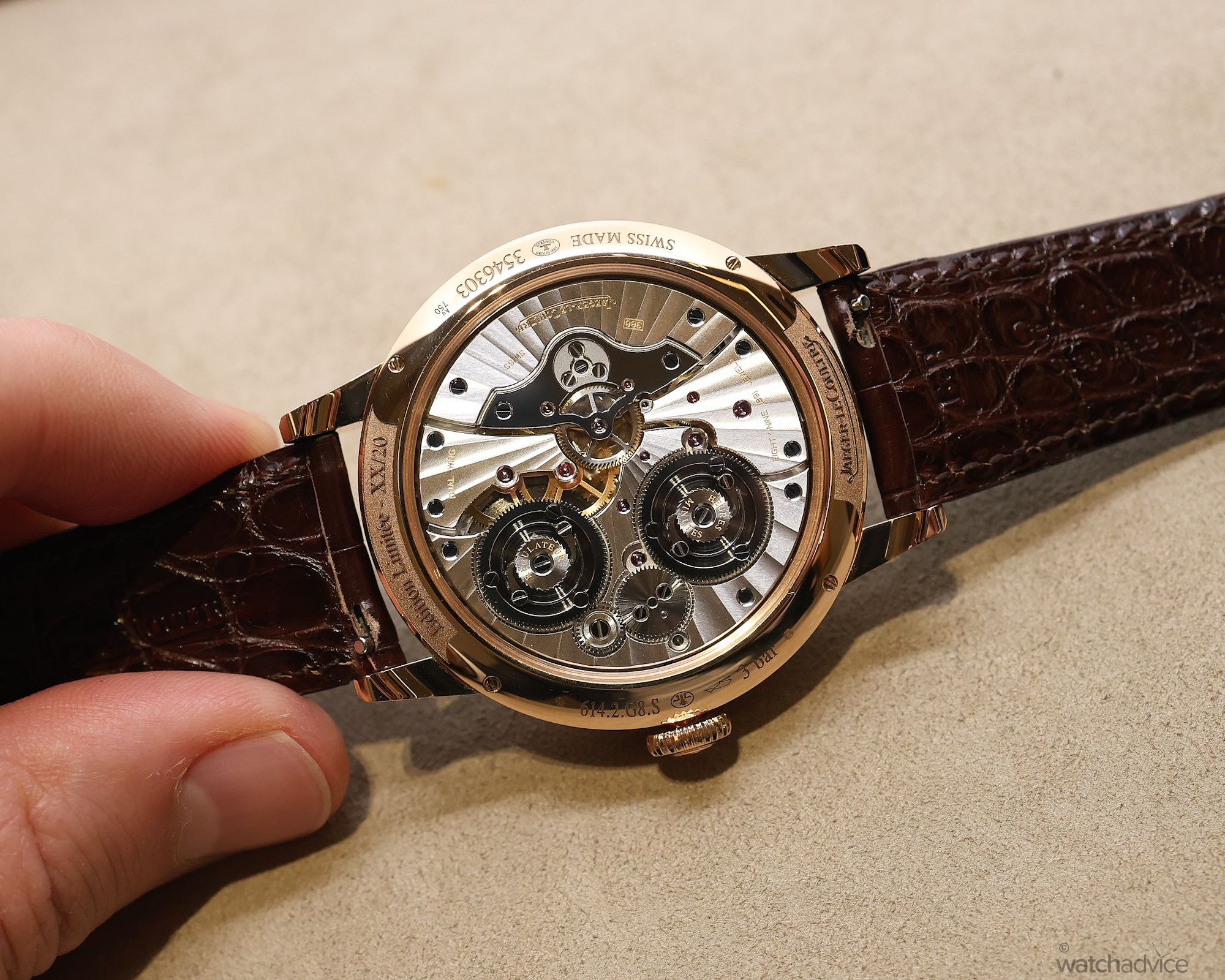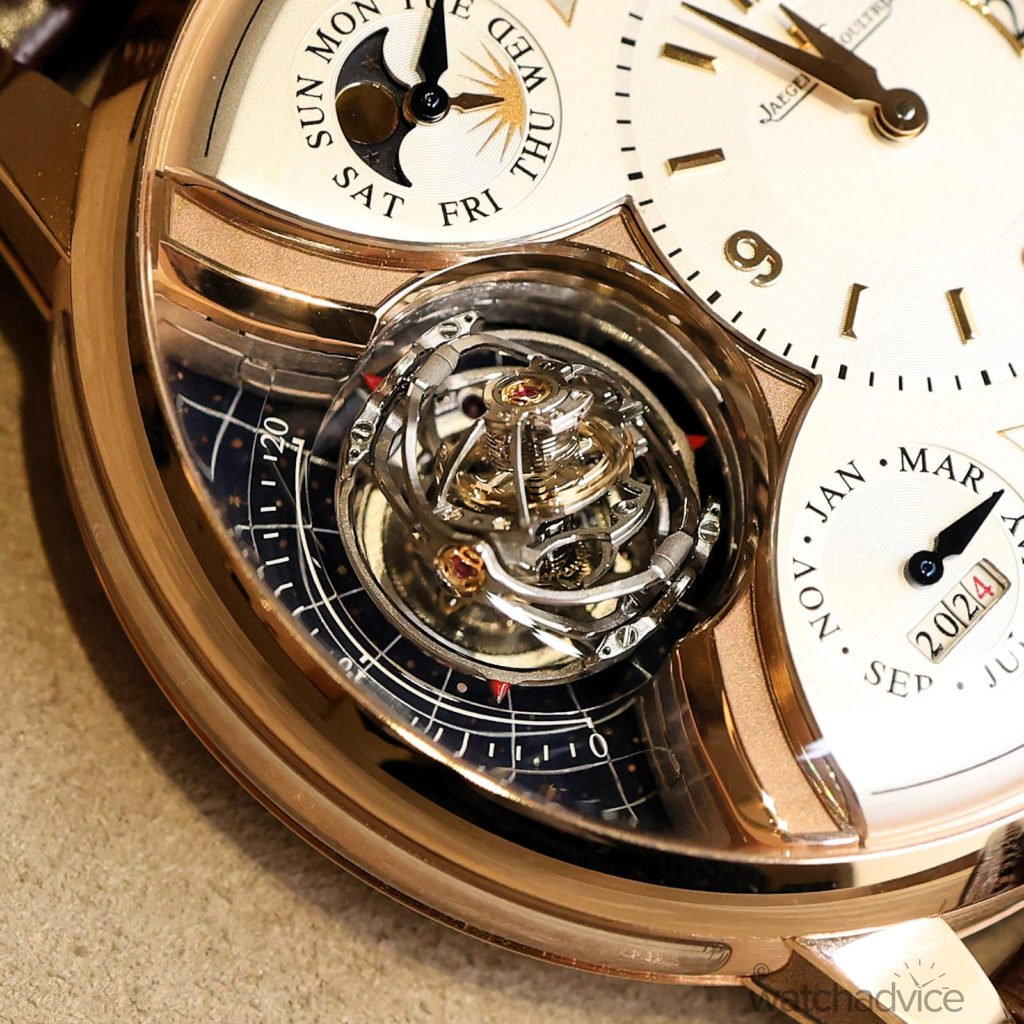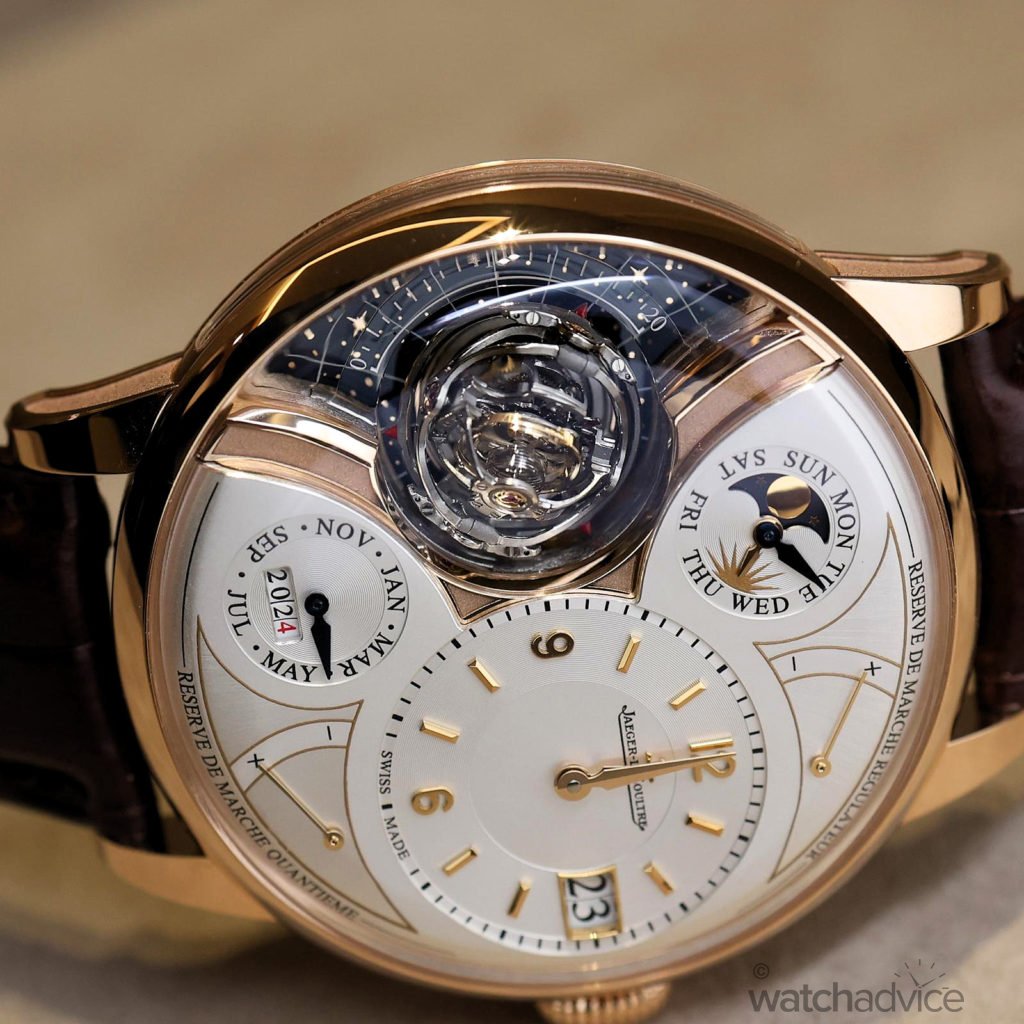There are watch complications, and then there are grand complications. But there’s a hidden third category, reserved for this Jaeger-LeCoultre, with perhaps the grandest complication of them all.
If you know watches, then you may know the reputation of Richemont brand Jaeger-LeCoultre among its peers. With a rich heritage stretching back to 1833, you’ll have heard whispers of the massive strides that JLC has made in the world of mechanical watchmaking. Often uttered in reverence is their nickname: “The watchmaker’s watchmaker.” But does that mean they made watches for other brands? Or does it mean that they made watches at the highest point of excellence achievable for any watch company?
The answer, indelibly etched in horological history, is a resounding ‘Both.’ For Watches and Wonders 2024, JLC has proven worthy of its reputation yet again with the release of the Duometre Heliotourbillon Perpetual.
Here is where I’d usually say a little more about the history of a piece or a collection to preface the design or the movement. In this case, explaining exactly what is happening inside this watch is an article in and of itself. So that’s exactly where I’ll go. The JLC Duometre Heliotourbillon Perpetual is 44mm diameter x 14.7mm thick, encased in decadent 18k pink gold and bears a gorgeous opaline dial. This incredible timepiece is powered by the manual wind Calibre 388, which I’ll break down into three separate elements (each part of the model’s name) to help you understand what’s happening, and to save my sanity while I write this:
Chapter 1: The JLC Duometre
The foundation of the Duometre was laid in 2007, as JLC set out to solve one of mechanical watchmaking’s most pervasive challenges: Accuracy. You might think to yourself, “Oh, were they chasing a Chronometer certification for accuracy?” Not exactly. Instead, they went a step higher by attempting to make increasingly complex watches, without bearing any disruptions of accuracy. Think of it like a game of Telephone – the more people you have, the more muddled the message might be for the person at the end of the line. Similarly, the more complications you put into a watch, the more inaccurate it becomes once it reaches the very end of the gear train.
The patented Duometre feature came as a solution to the problem. Although painfully complex to develop and build, the concept is rather simple in execution: The Duometre function uses two barrels and gear trains, each dedicated to different functions, but linked to a single regulating organ. One barrel operates the time, whilst the other operates the other functions. This innovation marked a significant milestone in both JLC’s achievements and the watchmaking industry, paving the way for the Duometre collection. It also explains why there are two power reserves for the timepiece so you can ensure both are running optimally and in synchronicity.
Chapter 2: The JLC Heliotourbillon
As I mentioned before, JLC’s watchmaking expertise goes back nearly two centuries. Thus, it should be of surprise to absolutely nobody that they have vast experience in building one of the most complex and recognisable complications in the industry: the tourbillon. Of course, many beautiful tourbillon watches have come and gone throughout their lifetime, so naturally, JLC has to do something extravagant to keep those other pieces in check.
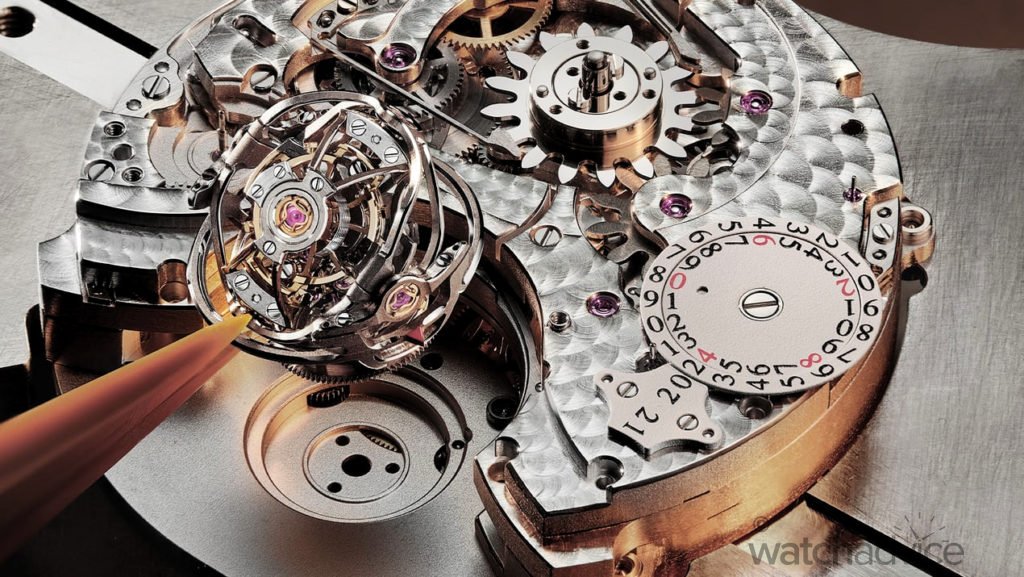
Enter the Heliotourbillon, situated at the traditional 9 o’clock position of the new reference. Unlike regular tourbillons, which only counteracts a handful of possible wristwatch positions, the Heliotourbillon counters almost all of them, ensuring the finest level of accuracy possible for a wristwatch. It does so by being able to move on three different axes, using three titanium cages rotating at different speeds to achieve this remarkable feat of micro-engineering. These cages, weighing less than 0.7 grams, minimize friction with ceramic ball bearings, resulting in a mesmerizing and precise timekeeping mechanism.
Perhaps the best analogy I could give is a quote from 1971’s Charlie and The Chocolate Factory:
Willy Wonka: “It’s a Wonkavator. An elevator can only go up and down, but the Wonkavator can go sideways and slantways and longways and backways…”
Charlie: “And frontways?”
Willy Wonka: “…and squareways and front ways and any other ways that you can think of.”
In this instance, the ‘elevator’ is a tourbillon. The ‘Wonkavator’ is JLC’s Heliotourbillon. A small detail I enjoy about the new JLC timepiece is that they also cut out a small sapphire window on the side of the case, which allows for uninterrupted viewing of the Heliotourbillon at all angles.
Chapter 3: The JLC Perpetual
We’ve covered plenty of perpetual calendars on our website. Whilst it’s the most well-known of the three complications here, the fact that JLC can still squeeze such a complicated mechanism in with the other two whilst maintaining a thinner case profile than my Tudor Black Bay GMT is worthy of commendation.
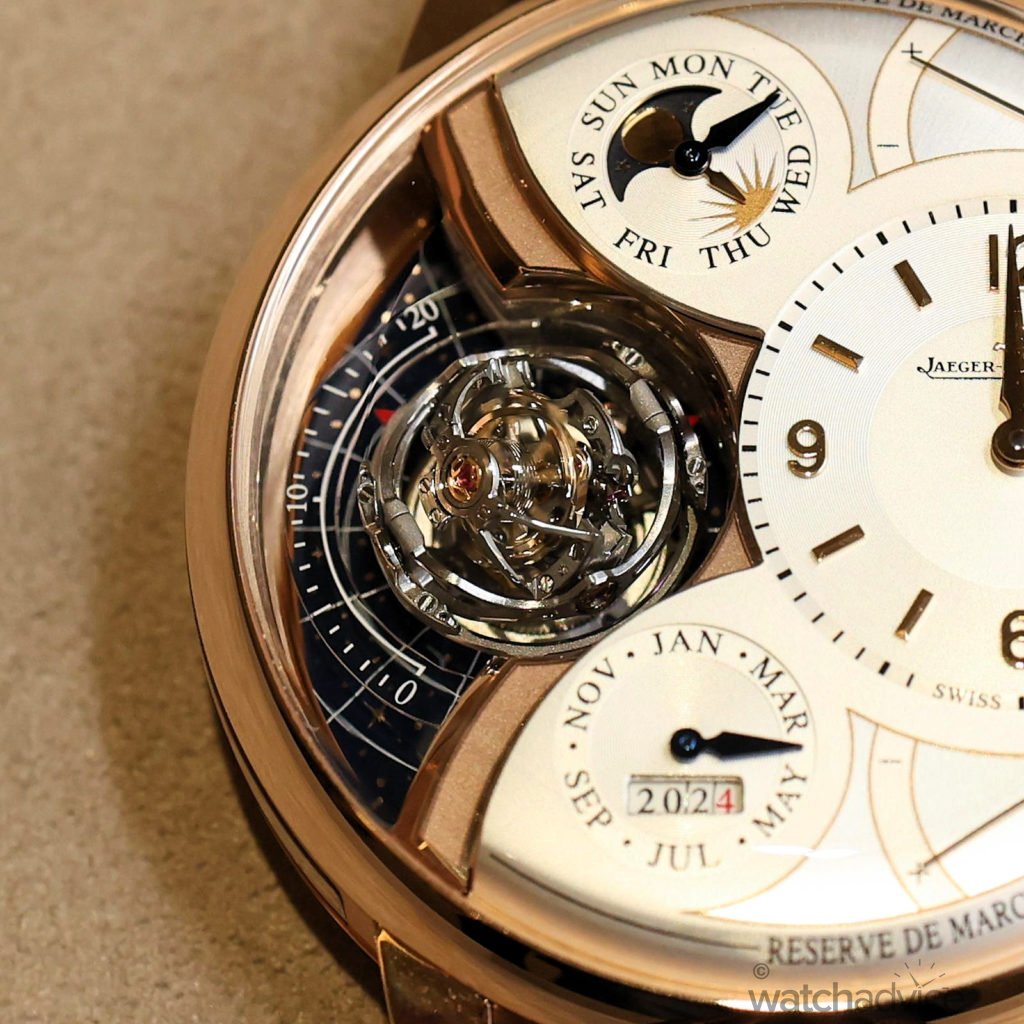
If you’re unfamiliar, however, a perpetual calendar is one of the most sought-after complications in all of haute horlogerie, which, in JLC’s case, displays the day, date, month and even the year. It is referred to as ‘perpetual’ due to the lack of need for correction until the year 2100, accounting for every leap year and month with perfect accuracy. For example, Feb 29 won’t come around until 2028, but the new JLC timepiece will account for it. This month ends on a 30th day instead of 31, but it will also be accounted for.
The only big issue is that it’s a massive pain to set again if it runs out of power. But if you’ve got the bread for this kind of winner, I’m sure you’ve got people to wind it for you.
Final Thoughts
There comes a point where a watch no longer becomes a watch – it becomes a wearable, ticking piece of horological artistry that transcends all typical timekeeping devices.
Jaeger-LeCoultre’s Duometre Heliotourbillon Perpetual is just that, going beyond even the most complicated of complications, to achieve mind-blowing sophistication. It does so with the power of three remarkable elements: the Duometre’s dual-barrel mechanism for precise timekeeping, the innovative Heliotourbillon combating gravity on three axes, and the perpetual calendar, an iconic staple of fine watchmaking.
Decked out in 18kt pink gold, this timepiece represents a milestone in horological achievement for the industry and reminds everybody why JLC’s reputation is not one to be taken lightly.
Reference: Q6202420
Specification
- Case: 44mm case diameter, 14.7mm thickness
- Case Material: 18k Pink gold
- Dial: Silver opaline with pink gold/blue accents
- Crystal: Sapphire crystal with anti-reflective coating
- Water resistance: 30m (3 Bar)
- Movement: In-house manual wind Cal. 388 with Heliotourbillon, perpetual calendar (day/date/month/year), moon phases, two power reserves
- Movement Frequency: 18,000 semi-oscillations per hour
- Power reserve: 50h, per barrel
- Bracelet: Dark brown alligator leather with 18k pink gold deployant buckle


